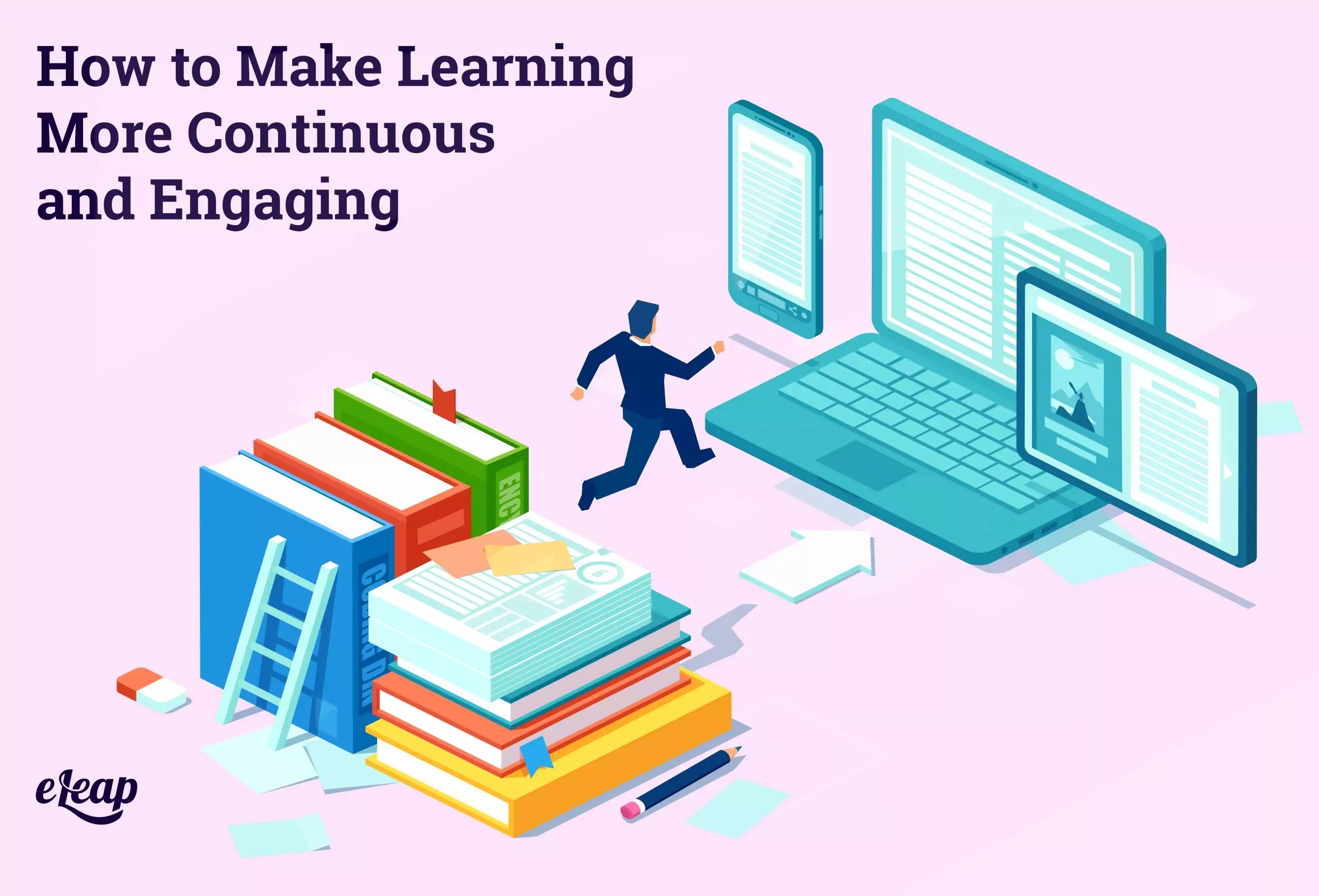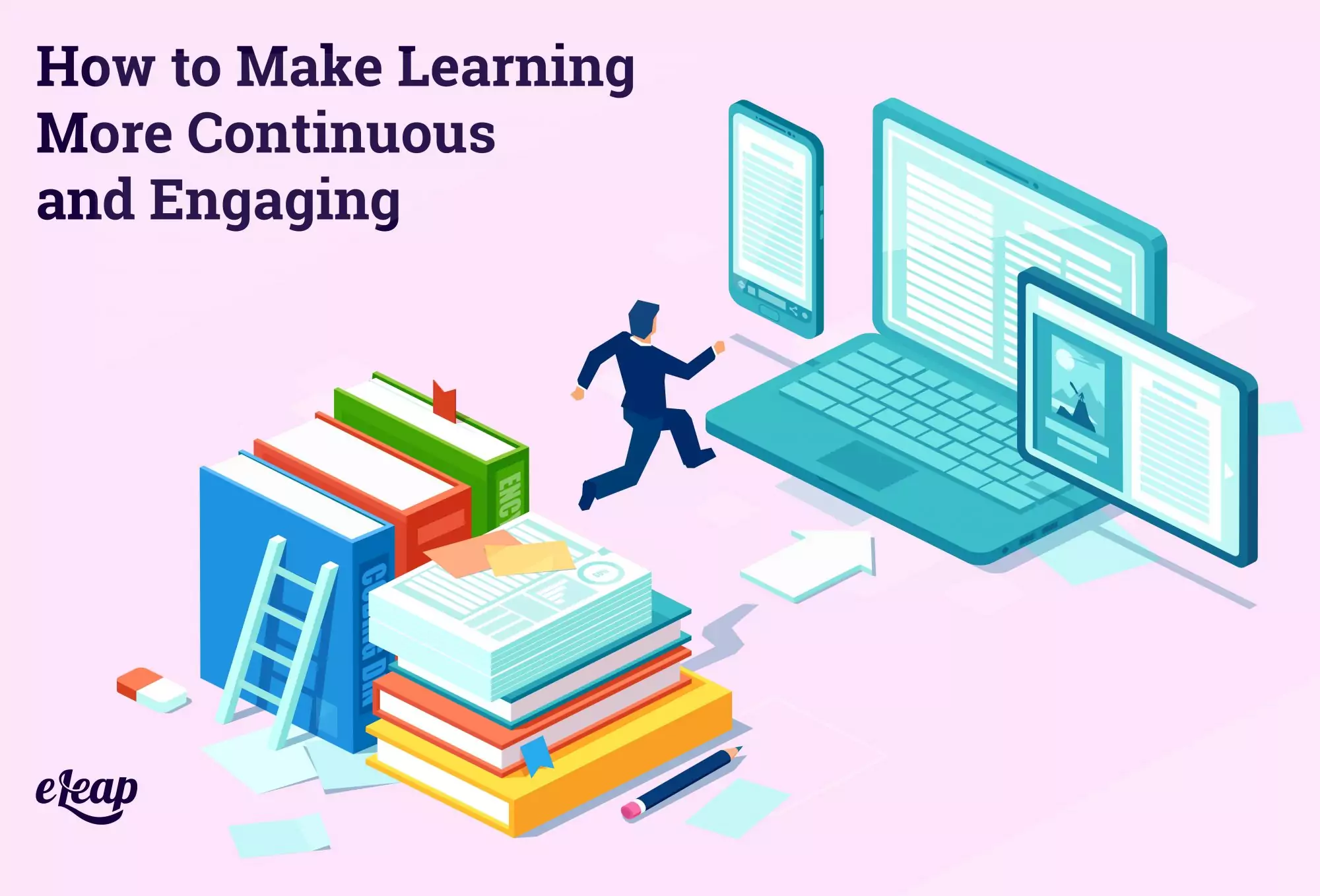How to Make Learning More Continuous and Engaging

Employee learning and development (L&D) is vital for the success of your business. From mandatory corporate training to professional CE and career development, it plays many critical roles. However, it can also be pretty challenging.
Many organizations struggle with learning and development. They can’t get their learners to continue their efforts. Their content is not very engaging. They struggle with more and more learners disconnecting.
The good news is that it’s possible to make your learning more continuous and engaging. The better news is that you can achieve those goals in quite a few different ways. We’ll talk about some of the better options in this post.

Put Your Staff in Charge of Employee Learning
Want to really up the engagement level of your L&D programs? Put your staff in charge of their own development. No, that doesn’t mean allowing them to opt out of mandatory corporate training. What it means is empowering them to chart their course through elective material to develop the skills they need to become more well-rounded employees and to move to higher positions.
At first glance, this might seem like pure folly. After all, if you let most people control their education, they’re going to take the easiest way out, right? That’s not really the case.
Your people want to learn. They want to develop and grow and succeed. They just need the tools to do so.
Cutting them loose from artificial constraints and training maps can do just that. You might be surprised at how much more engaged your learners are when they’re able to pursue things that interest them, that speak to their passions and goals, rather than being forced down a particular educational path.
Focus on Microlearning
Another important tip is to break things up. Both macro and microlearning offer benefits, but the investment of time and energy needed for long sessions can be more than your employees can spare at any one time. This makes microlearning an invaluable aid.
What is microlearning? Simply put, it’s nothing more than a series of small learning moments – minutes at a time, usually. They allow your employees to learn something quickly and directly and then get back to their responsibilities. They also foster better continuous learning, as employees are happier to complete multiple shorter lessons sequentially.
Microlearning can also be much more engaging. Why is that? It’s much easier to tailor focused, short lessons to the employee in question. That applies not only to their role in the organization but their skills and even their plans for the future.
Curate Resources and Share
Your LMS is probably filled with valuable information. However, that might not be enough. More and more companies are finding that the Internet allows them to access an incredibly rich treasure trove of resources and share them with employees.
Not only can your L&D team do this, but you can empower employees themselves to curate resources and share them with team members and others. This helps create a social learning environment, forges stronger bonds between employees, and builds a better business overall.
How might they share those resources? There are so many ways! Email and tools like Slack come to mind first, but you might also choose to create your own digital social assets, such as branded chat apps and the like.
Practice What You Preach
This tip has little to do with the content you’re offering or the frequency of training, and more to do with your culture. If your leaders don’t believe in the value of learning and ongoing training, then your employees are going to disengage and disconnect.
Your managers need to lead by example. They need to not only espouse the value of ongoing learning but commit to it themselves. When that happens, employees have a concrete, direct example to follow. It also helps ensure that your culture is one that values and pursues learning.
Make It Collaborative
We touched on this one above, but it bears further scrutiny. Making learning social can offer many different benefits. People learn better in social situations – we’re social creatures, after all.
We’re actually hardwired to learn better from in-person experiences with other people. Chances are good that you remember more of what you learned from someone else in your life than you did from the last textbook you read.
So, how do you make learning collaborative within your business? There are lots of ways to go about this, from creating digital user forums for employees to interact to implementing mentorships programs and everything in between. No one answer will work for all organizations, so take a measured approach based on your unique needs and situation.
Implement Games
Gameplay is an amazing way to build capabilities and hone skills. It also makes employees more eager for the next learning session. These are just some of the reasons that games are used in training in all branches of the US military – they can do the same for your business.
How do you bring games into the L&D environment? Really, the sky’s the limit. Consider the following:
- Create interactive games that take the place of conventional computer-based lessons.
- Create game-like content, such as choose-your-own-path lessons.
- Add gamified elements to your L&D environment, such as leaderboards and high scores.
Find Employee Evangelists
There’s sometimes a tendency for employees to dismiss mandates that come from above, particularly from HR concerning the importance of training. To help get around this reticence, you can and should recruit employee evangelists. What does that mean?
Simply put, you need to identify your top learners and then let them lead others into greater engagement. Employees who are passionate about learning and development can inspire the same in others, building a stronger business overall.
With these tips, you should be able to begin improving engagement and creating more continuous learning for your employees. Over time, you’ll notice fewer skill gaps, better employee engagement, improved employee retention, and better profitability.